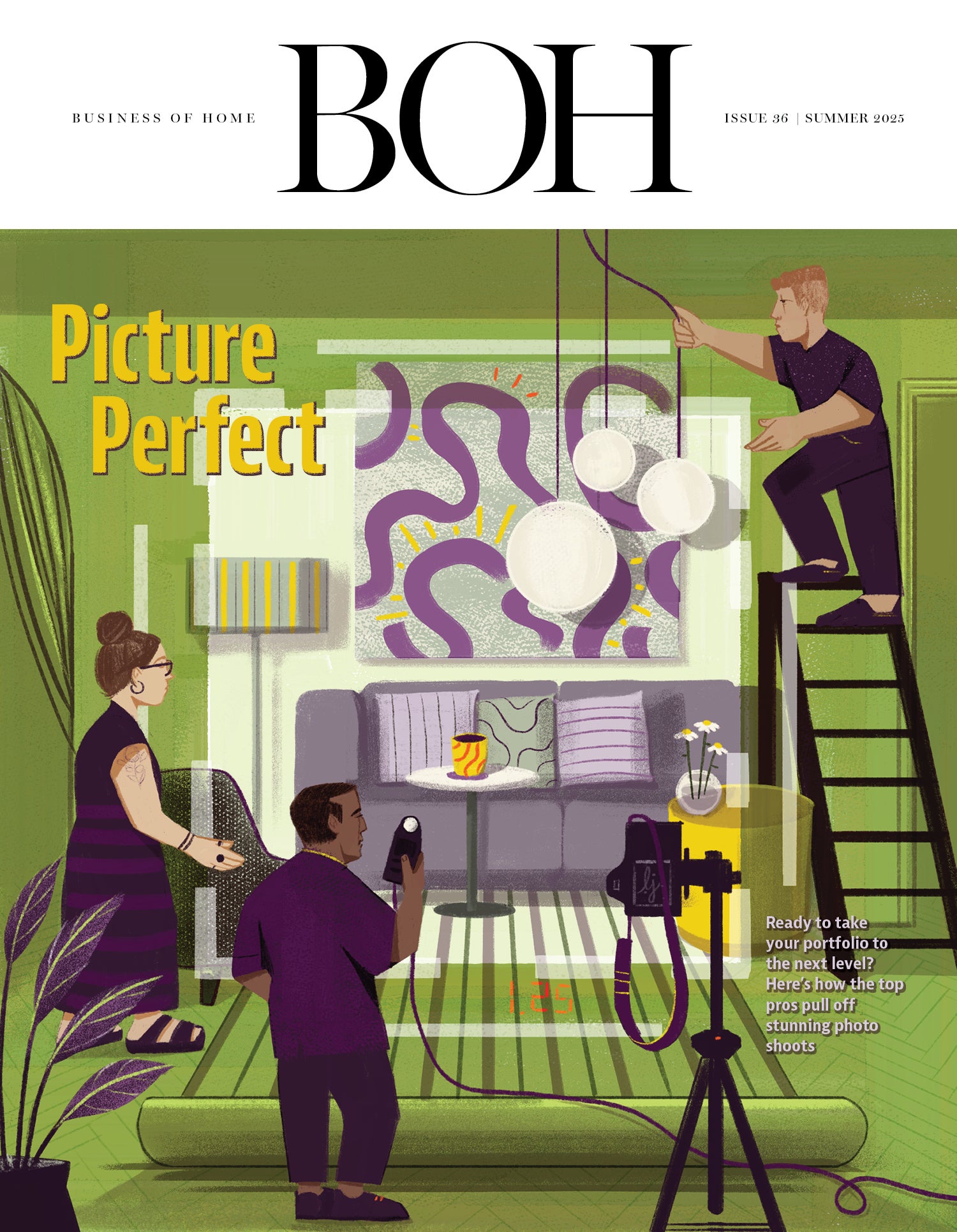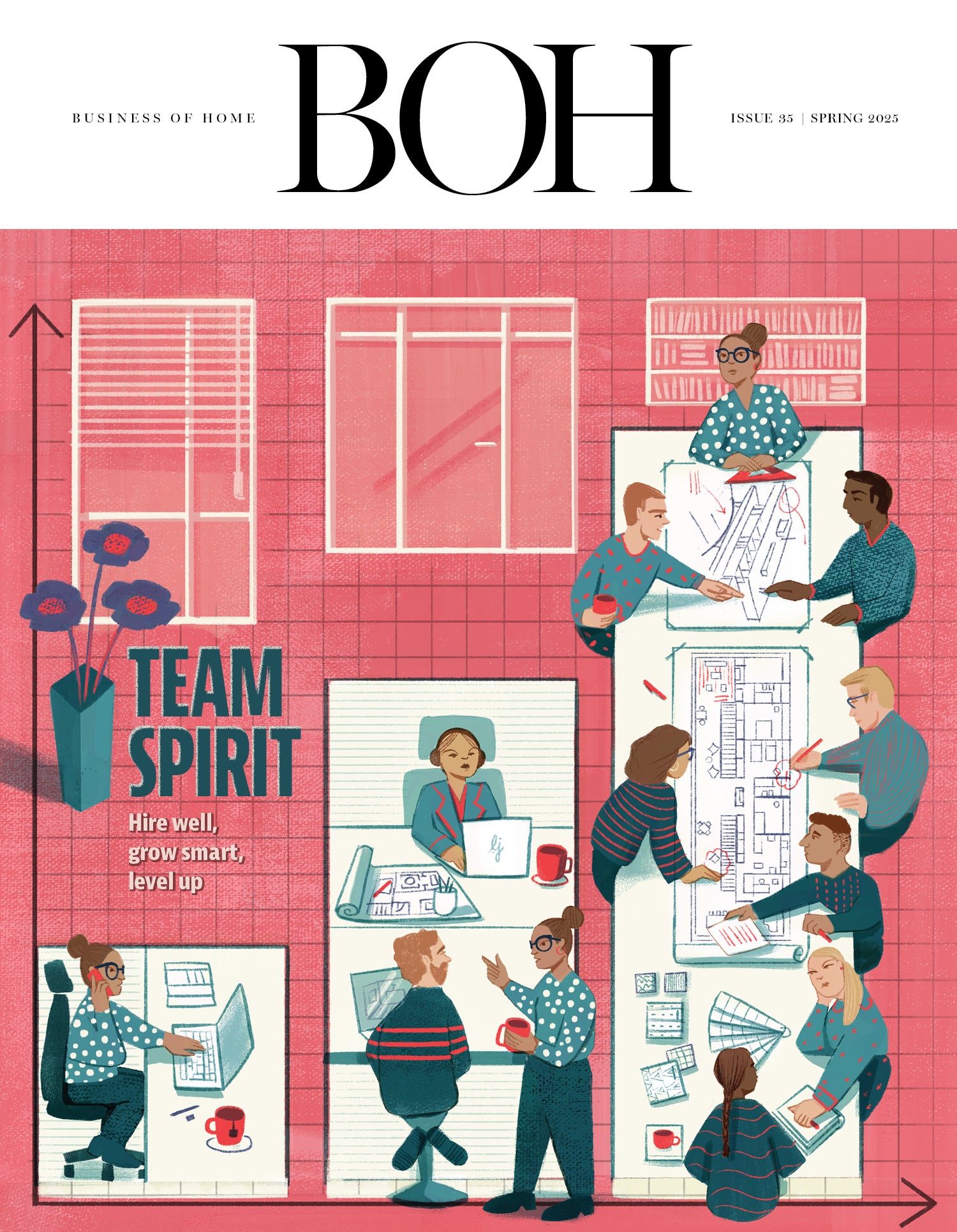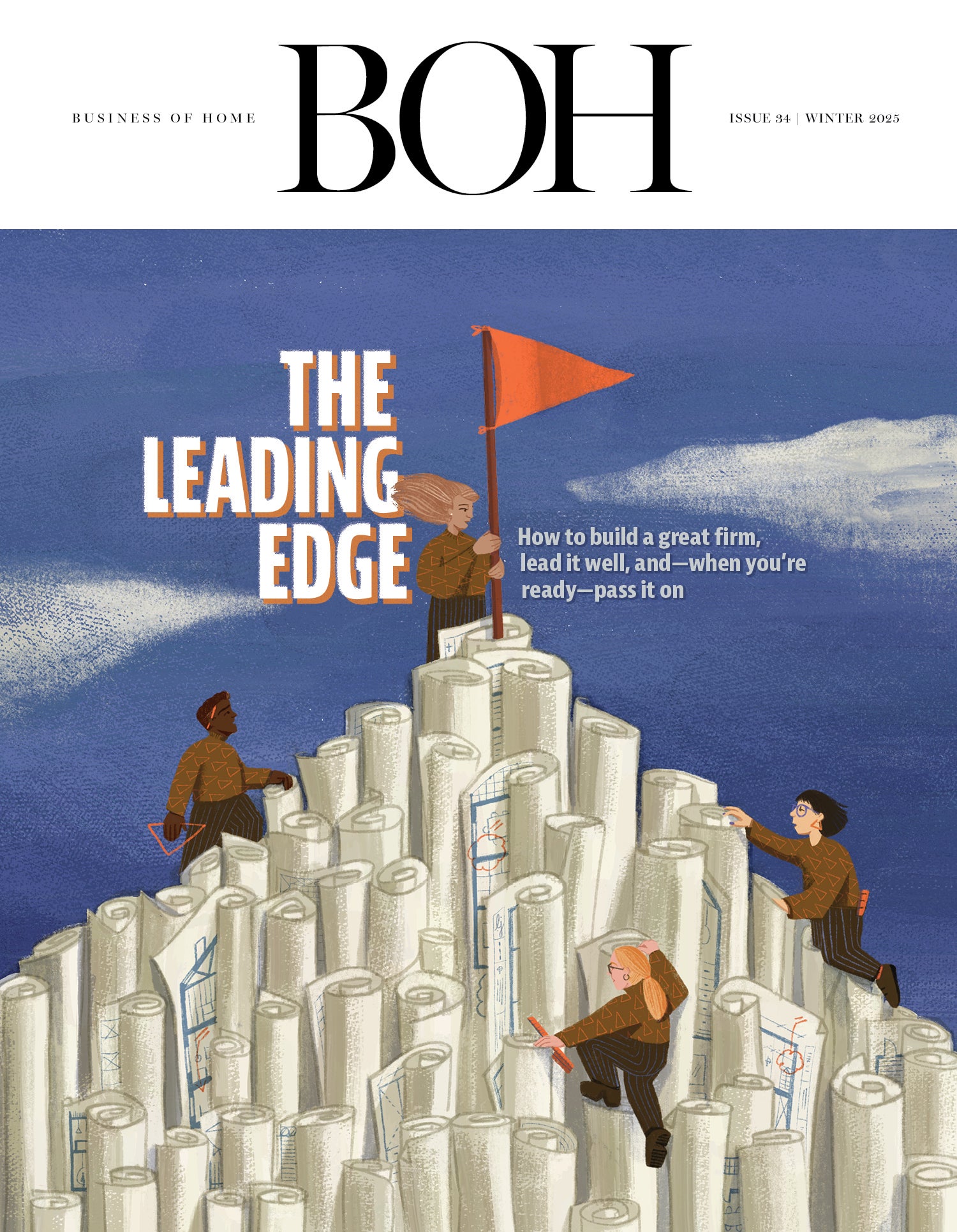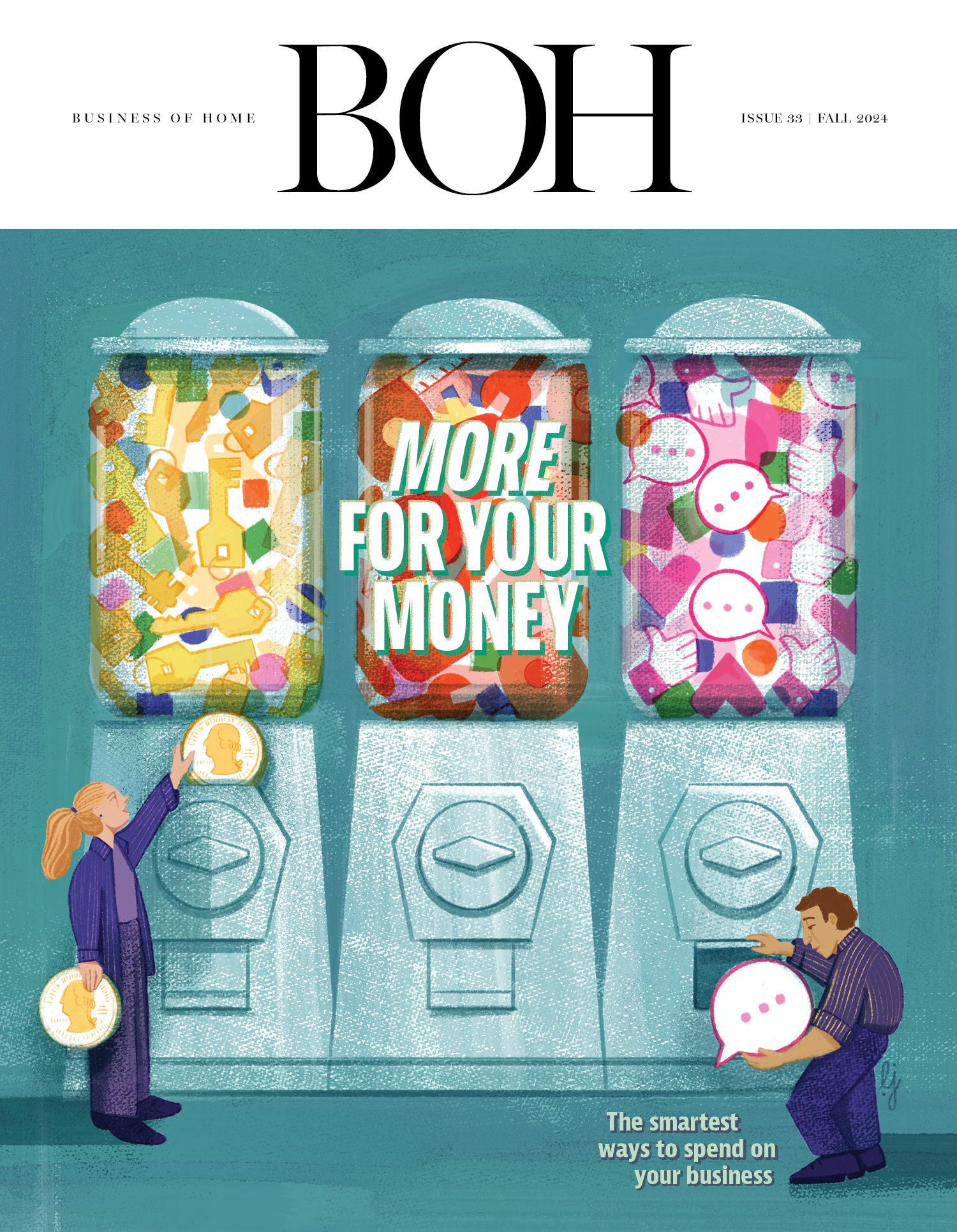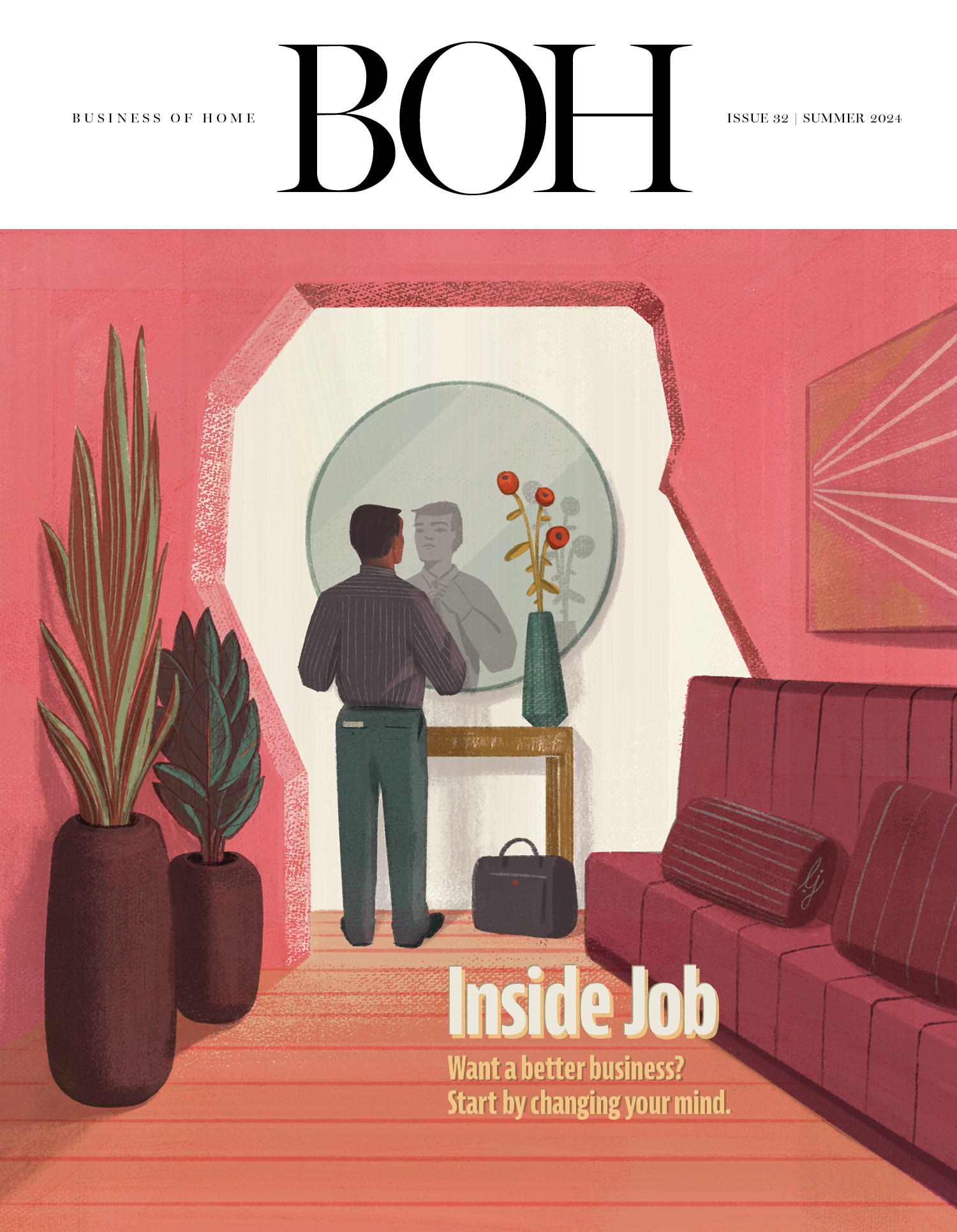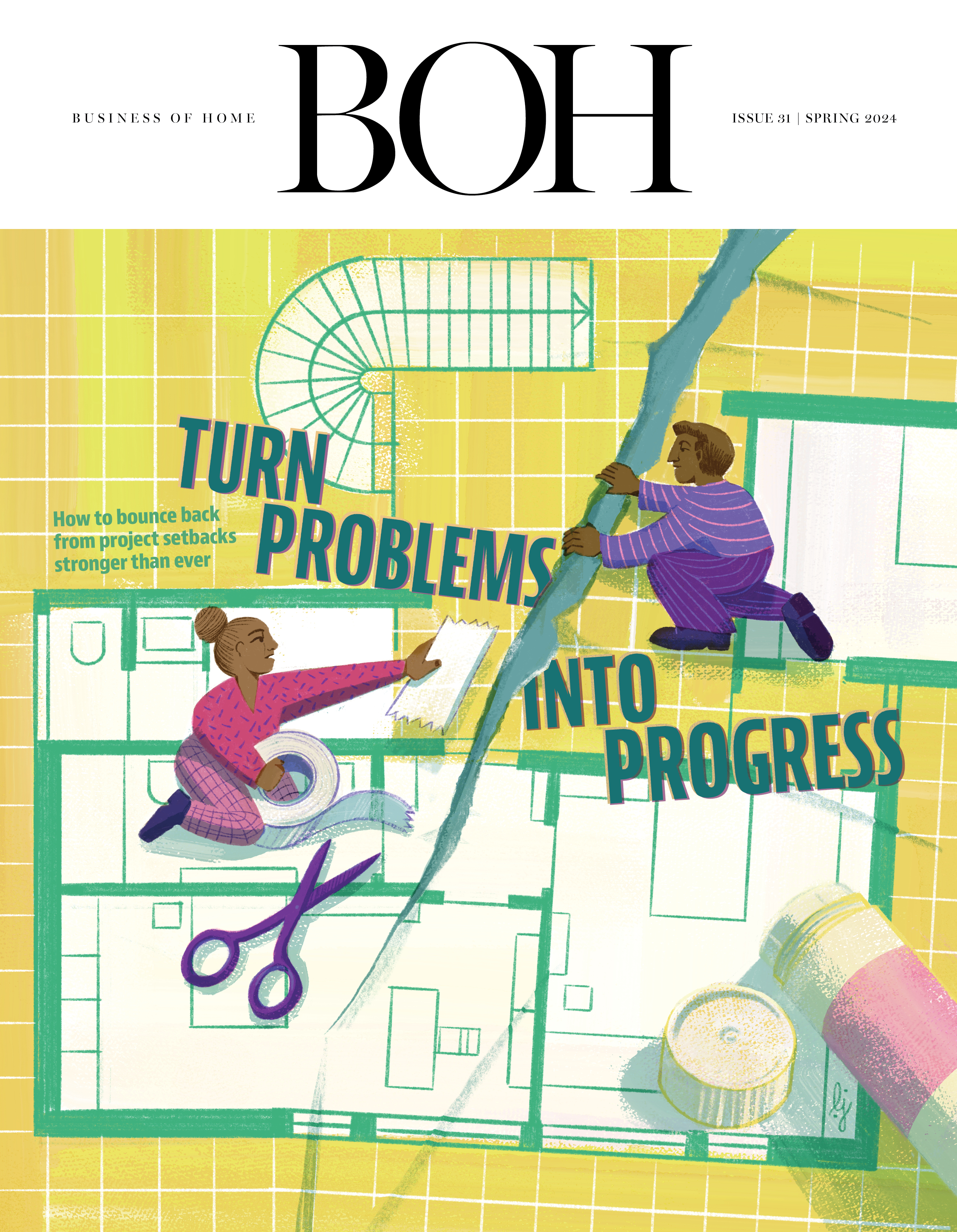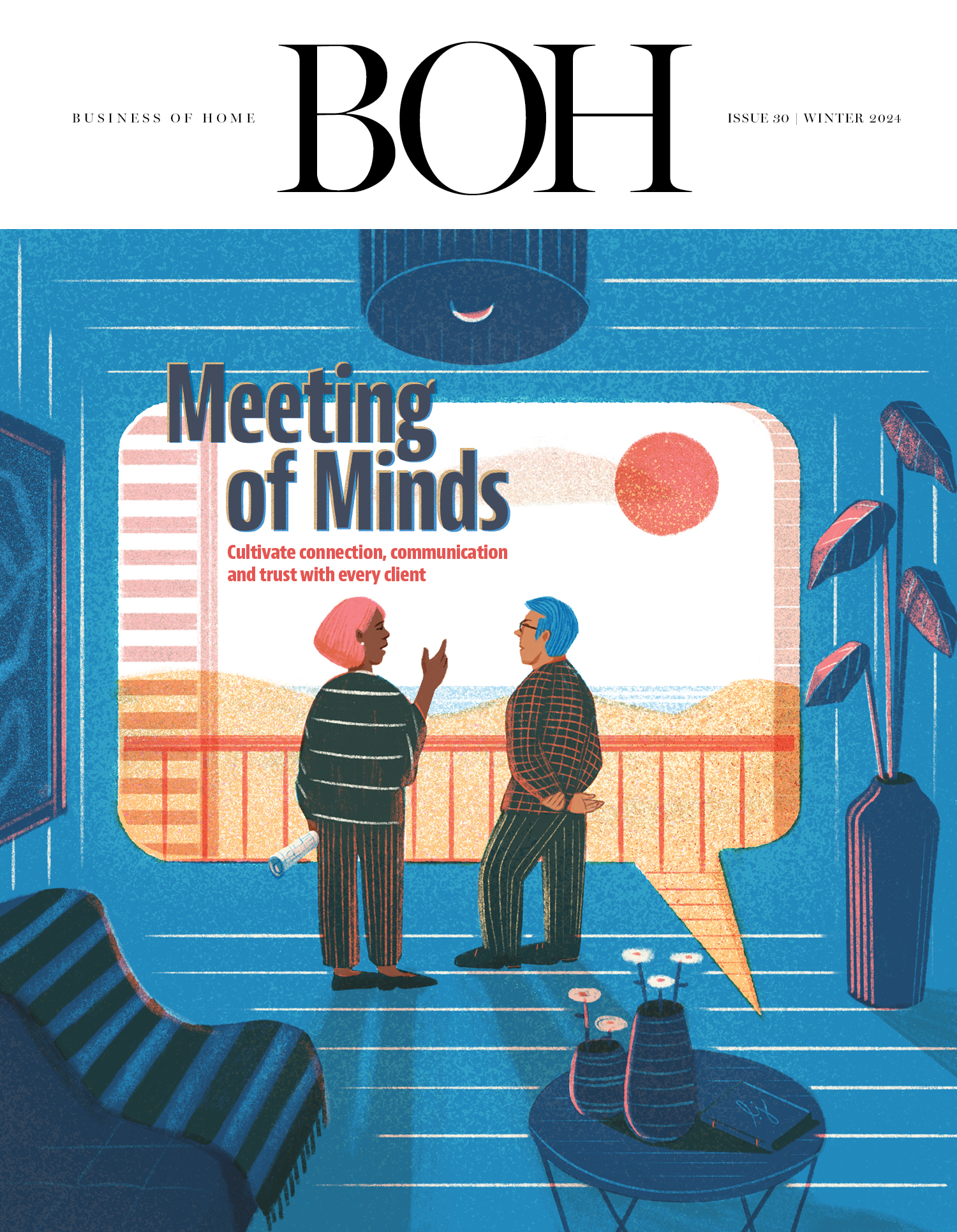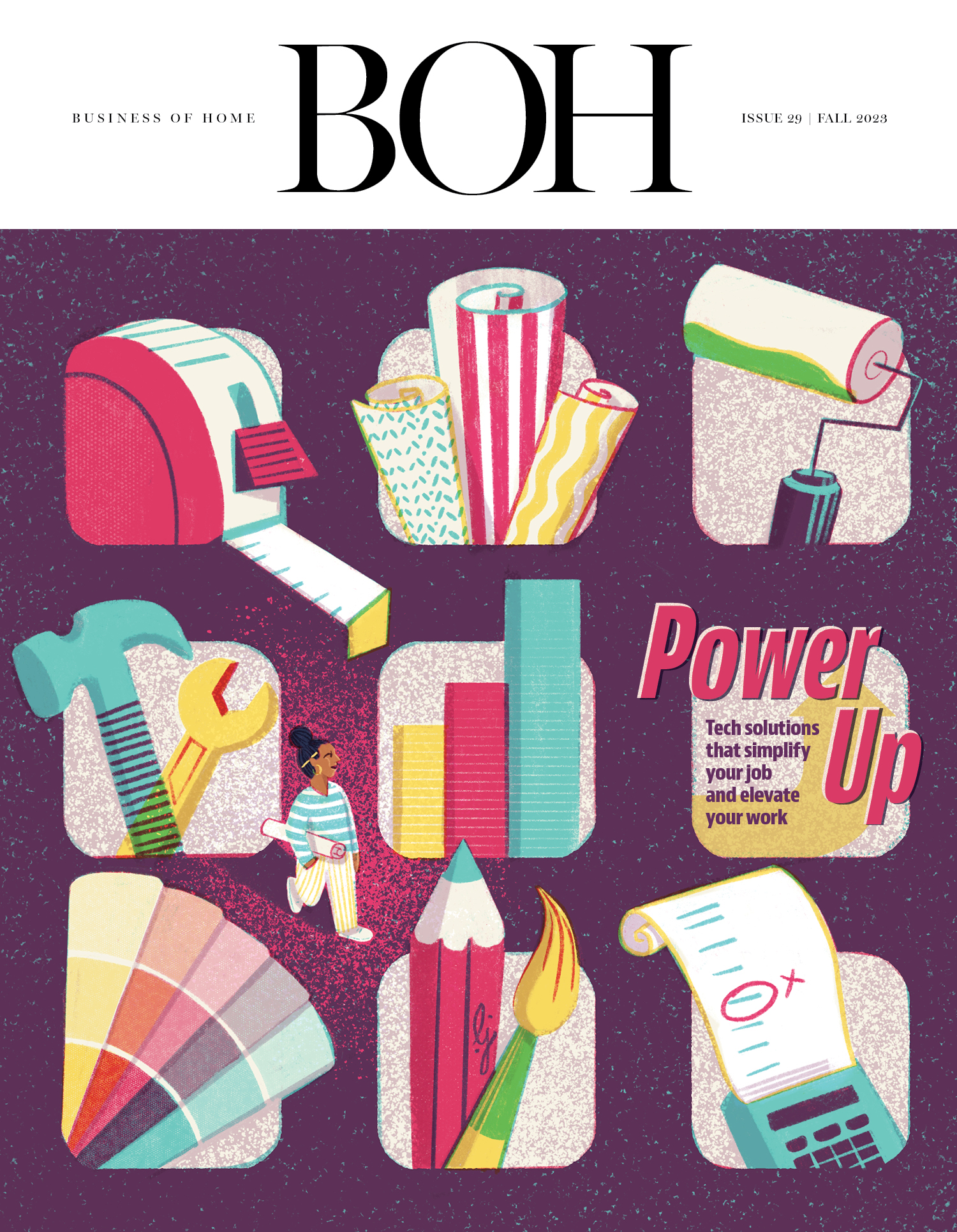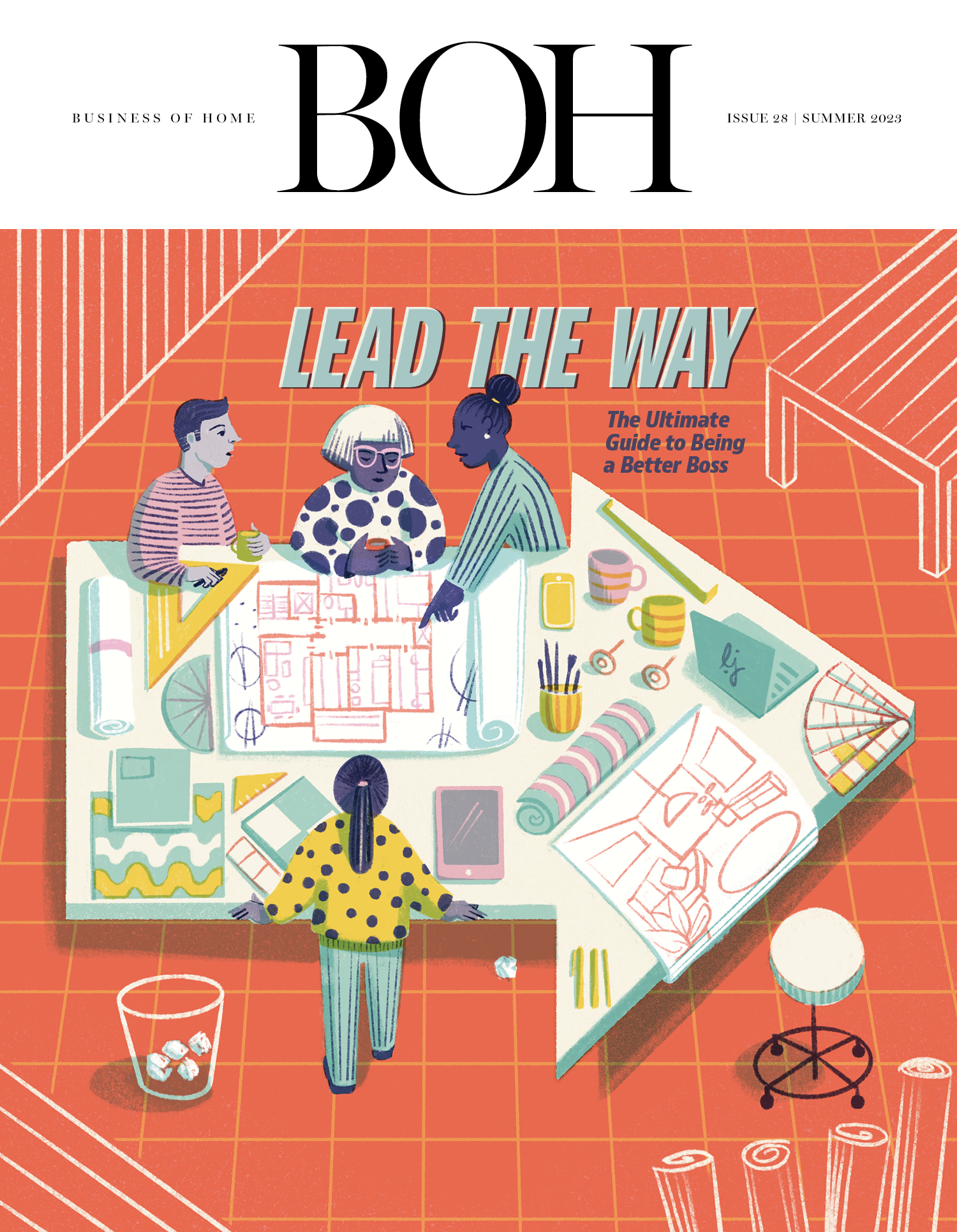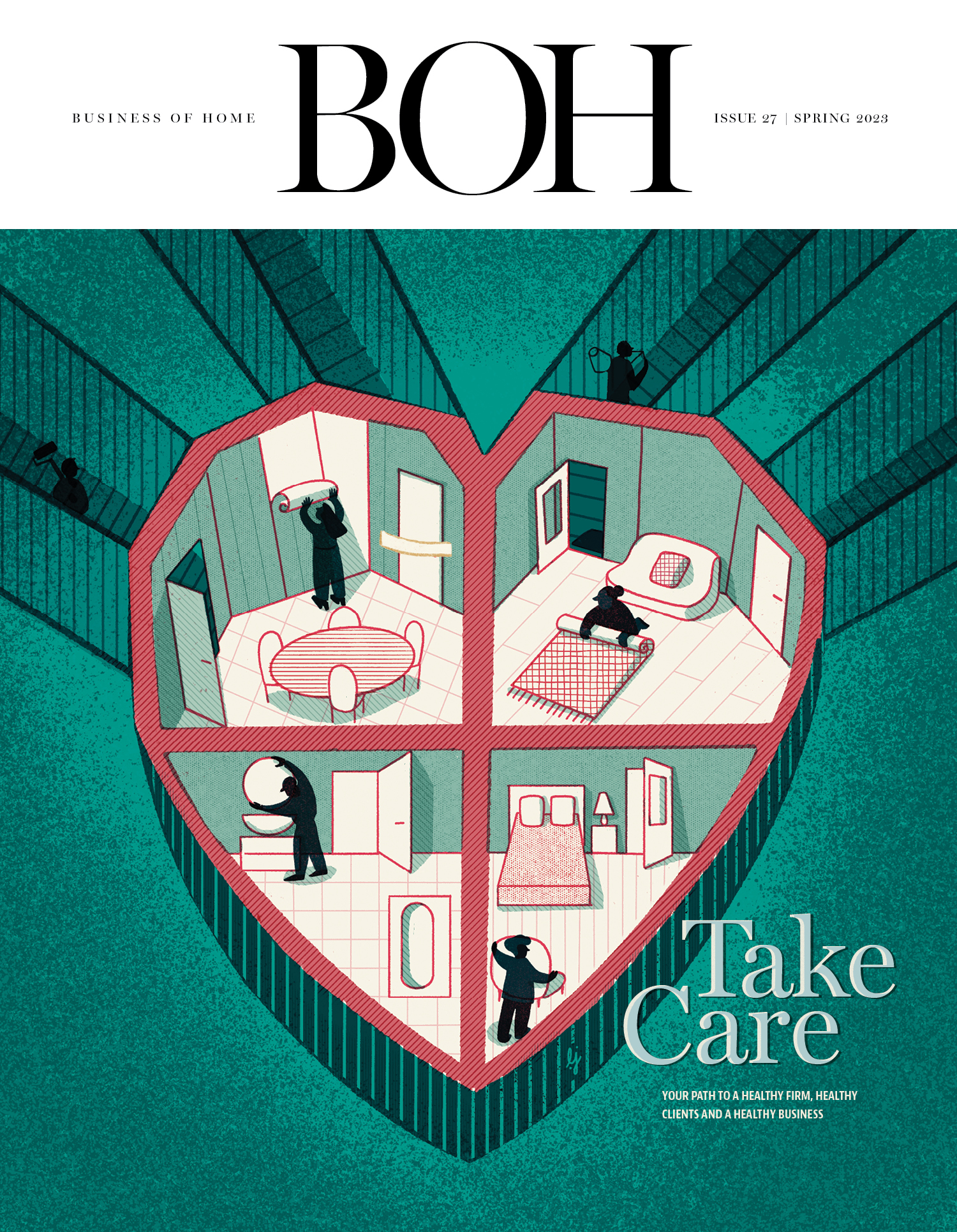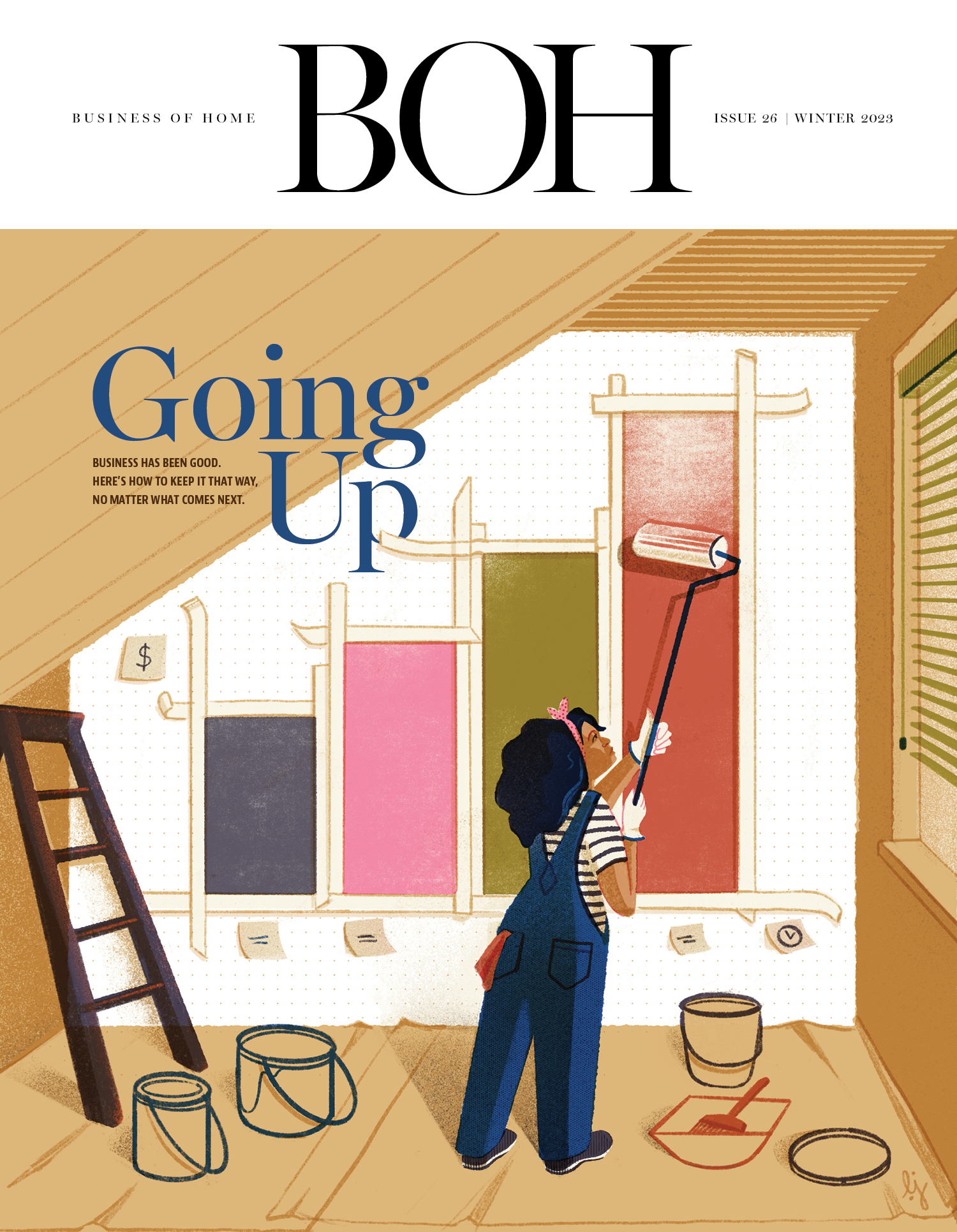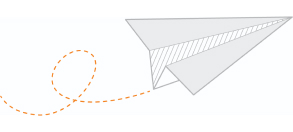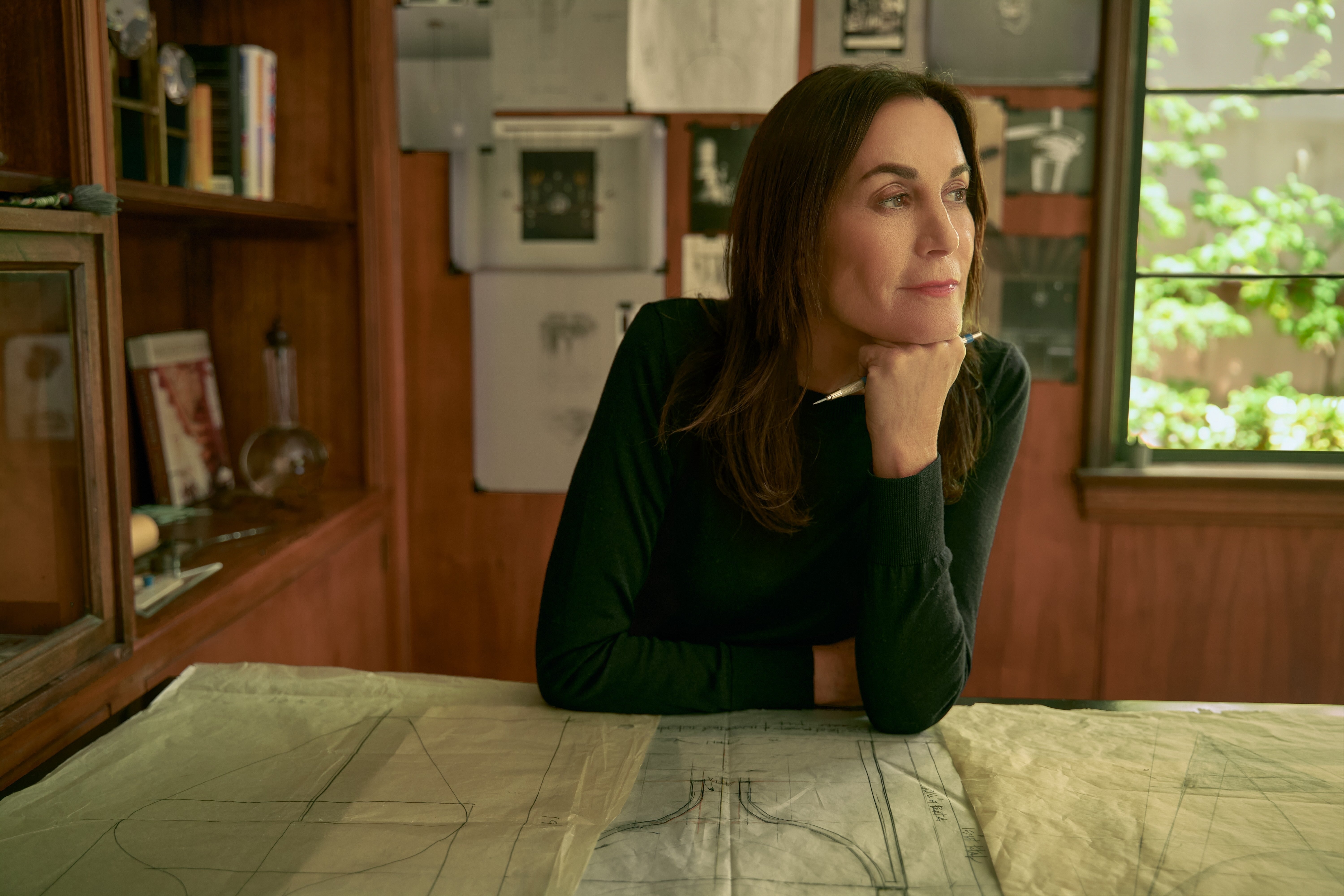Alison Berger harnessed her childhood fascination with fire to forge a career in glassblowing. When she was 15—a few years after a candlemaking experiment nearly burned down her kitchen—she stumbled upon a glassworks studio and began taking classes. Her passion for the craft eventually took her to the Rhode Island School of Design. “This idea that you create, and it’s fun, and you do it just because it feels good, turned into: You’d better have a reason. You’d better be able to speak about it articulately,” she tells host Dennis Scully on the latest episode of The Business of Home Podcast. “It didn’t diminish the enjoyment. For me, it actually elevated it to be able to speak of it in such an autocritical way.”
After stints with renowned glass artist Dale Chihuly in Seattle; at an architecture program at Columbia University, where she also designed pieces for artists on the side; and an internship with architect Frank Gehry in Los Angeles, Berger stayed on the West Coast and completely immersed herself in glassblowing. She found representation for her own pieces at Bergdorf Goodman, as well as collaborations with the fashion brands Hermès and Commes des Garçons. Then, in the late 1990s, she began designing for Holly Hunt—a multidecade collaboration that would cement her status in the design industry. “It was tremendously exciting because as an artist, I want my work to connect, and I saw it connecting. I’m not a writer, and I’m not a painter, so I communicate through light,” she says. “People were appreciating the light, and that was a way for me to converse with people in a [manner] that I couldn’t converse in other ways.”
More recently, Berger began a collaboration with RH after designing a multistory installation for the brand’s New York flagship in 2018. Unlike in her past collaborations, where she was physically involved with the manufacturing, with RH she was solely the designer. “Since working with Holly, and even when I was doing objects, my work has been knocked off or copied,” she says. “So I thought, ‘Oh, this is an interesting way to claim a part of that mass production world that I’m not a part of yet I’m clearly feeding.’ And so it was kind of a creative challenge—could I actually take back some of the legacy of what I design where I never actually touch the work?” Comparing it to the fashion industry, Berger describes the pieces she normally creates as “very high couture,” whereas with RH she’s designing things that are more accessible. “As an artist, I want to connect with a larger audience,” she says. “That’s what I'm here to do, to spread the beauty of light on every level possible.”
Crucial insight: After working through both the economic crash of 2008 and the Covid boom of 2020, Berger has clear advice for fellow artists with their own studios: Stay lean and mean. During Covid, while much busier than normal, she didn’t go on a hiring spree. “It’s not about expanding and contracting, it’s about staying the course with the team of people you trust no matter what’s coming down the road,” she says.
Key quote: “Stay the course of what you believe, [and] understand that things take a long time. There’s such a level of impatience that the younger generation has. It’s taken me years to figure out this one technique, and so if you believe in it, keep following it, don’t give up.”
This episode is sponsored by Ernesta and Crypton. Listen to the show below. If you like what you hear, subscribe on Apple Podcasts or Spotify.
The Thursday Show
Host Dennis Scully and BOH executive editor Fred Nicolaus discuss the biggest news in the design world, including Trump’s new tariffs, Charles Cohen’s ongoing legal saga, and Pinterest’s battle with AI spam.
This episode is sponsored by Jaipur Living. If you like what you hear, subscribe on Apple Podcasts or Spotify.




